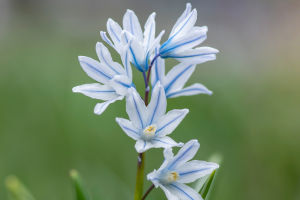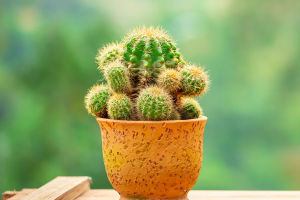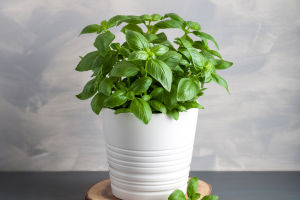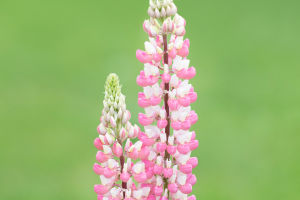
Have you ever seen a flower that looks like it holds the stars of spring? That’s exactly what we get with Striped Squill, a charming little plant with delicate blue-striped petals.
Known scientifically as Puschkinia scilloides, this perennial bulb is one of the earliest bloomers in spring, often appearing while the last bits of snow are still melting. It’s beautiful, tough, and surprisingly low-maintenance—perfect for any garden lover looking to add some early color.
What Makes Striped Squill Special
Striped Squill isn’t just pretty—it’s incredibly strong. It handles cold winters and dry summers like a champ. The flowers are small (about 2.5 cm in diameter), white with soft blue stripes down the center, and shaped like stars. Each bulb sends up a cluster of these blooms, surrounded by slender, grass-like leaves. The plant grows to around 10–15 cm tall (4–6 inches), making it a great choice for borders, rock gardens, or container arrangements.
Where It Comes From and Where It Grows
Originally from mountainous areas of Western Asia, Striped Squill naturally grows in subalpine meadows and rocky hillsides. Today, it’s been welcomed into many gardens across Europe and North America, thriving in temperate climates. We can grow it successfully in most parts of the Northern Hemisphere as long as we provide well-draining soil and a bit of sunlight.
How to Grow Striped Squill the Easy Way
Striped Squill doesn’t ask for much. We just need to plant it in well-drained soil, ideally in a spot with full sun to partial shade. It blooms in spring, rests in summer, and comes back year after year. The best time to plant is in autumn, before the first frost. Once it’s in the ground, it basically takes care of itself. During its growing season, a light weekly watering is usually enough.
Fertilizing and Pruning Tips
To help it thrive, we can give it a balanced fertilizer in early spring. A formula with higher phosphorus helps the bulbs produce stronger blooms. A light feed once a month is enough—there’s no need to overdo it. After blooming, we can remove the faded flowers and yellow leaves, but it's important to leave the green leaves intact so the plant can recharge for next year through photosynthesis.
Propagating for More Blooms
Want more of these lovely flowers? No problem. Striped Squill multiplies easily through bulb division. In summer, after the plant has gone dormant, we can gently dig up the bulbs, separate them, and replant them right away. Just make sure the soil is well-drained and the location gets decent light. Over time, we’ll see bigger clusters of blooms each spring.
Why We Love Having It in the Garden
Striped Squill may be small, but it brings a lot of joy. It adds beauty to the garden when not much else is blooming and pairs well with crocuses and snowdrops. Plus, it attracts pollinators like bees early in the season, helping the whole garden wake up. And since it's low-maintenance, we can enjoy its charm without much work.
Let’s Bring the Stars to Our Garden
If we’re looking for a plant that’s beautiful, tough, and easy to grow, Striped Squill is a perfect choice. It shines in early spring, asking for very little and giving us a lot in return. Whether we plant a few bulbs or cover an entire bed, this tiny flower will light up our garden like a sprinkle of spring stars.
So, Lykkers, are you ready to add some striped sparkle to your garden? Let us know if you’ve tried growing Striped Squill—or if you’re about to! We’d love to hear about your garden adventures.
Small but Mighty: Striped Squill & Grape Hyacinth
Video by Buckeye State Gardening


